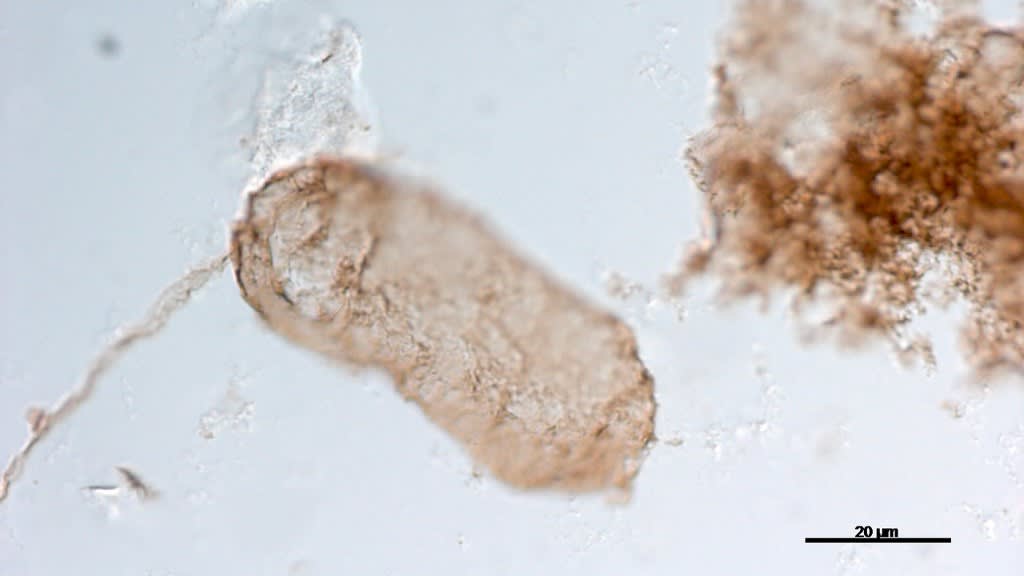PHOTOSYNTHESIS EVOLUTION CLARIFIED BY STUDYING BACTERIA FOSSILS
Photosynthesis evolution remains a mystery to biologists. Find out how a new study sheds light on our understanding of this critical organic process by pushing the timeline of its origins back by over a billion years.

Photosynthesis evolution remains a mystery to biologists. Find out how a new study sheds light on our understanding of this critical organic process by pushing the timeline of its origins back by over a billion years.
Like most people, I learned about photosynthesis in public school. I think it was Mrs. Martin, my teacher in Grades 3 and 4, who first showed our class the formula for the biological process plants use to convert light into chemical energy:
Light + Carbon Dioxide + Water → captured by chlorophyll → Sugar + Oxygen
The sugar and oxygen on the right-hand side of the formula are critical. Photosynthesis evolution has been the main source of Earth’s biological energy and of the oxygen in our atmosphere.
VAN HELMONT BEGAN DISCOVERY PROCESS FOR PHOTOSYNTHESIS
Back in the 17th century, Jan van Helmont began the process that led to the discovery of photosynthesis. He carefully weighed the mass of plants and the soil in which he’d planted them.
Van Helmont found that plants absorbed very little soil mass, suggesting that plant growth must come from elsewhere. He assumed it was from the water, which was partially true, but carbon dioxide also plays a key role.
Joseph Priestley found that burning a candle or placing a mouse inside a sealed jar used up the oxygen. Further, he discovered that putting a plant inside the jar restored the oxygen over time.
INGENHOUSZ REALIZED SUNLIGHT ENABLES RELEASE OF OXYGEN
Jan Ingenhousz repeated Priestley’s work in 1779 and realized that it was sunlight that enabled the plant to restore the oxygen. Jean Senebier explained how plants absorb carbon dioxide and release oxygen in 1796, and then Nicolas-Theodore de Saussure confirmed Van Helmont’s impression that the increase in plant mass also involved water.
Dr. Emmanuelle Javaux is a biologist and zoologist working at Belgium’s University of Liege. Her research examines the first traces of life and the evolution of Earth’s biosphere during Precambrian times.
The journal Nature published a paper this week of which Professor Javaux is a co-author. The paper documents the findings from a study of 1.75 billion-year-old fossils called Navifusa majensis.
OLDEST MEMBRANE SPECIMENS EVER DISCOVERED
Scientists call the structures the researchers found in the fossils “thylakoid membranes,” and these are the oldest specimens of those membranes ever discovered. They take the fossil record back by more than a billion years.
The team looked at Navifusa majensis microfossils from Australia’s McDermott Formation, as well as from the Congo and Canada’s Arctic. The Australian and Canadian samples contained traces of the thylakoid membranes the scientists were seeking.
That means that Navifusa majensis was a fossil cyanobacterium – a single-celled organism that played a critical role in photosynthesis evolution. The discovery takes the history of photosynthesis much further back in history.
“EXTEND THE FOSSIL RECORD BY 1.2 BILLION YEARS”
“The oldest known fossil thylakoids date back to around 550 million years. The ones we have identified therefore extend the fossil record by 1.2 billion years,” explained Professor Javaux.
Cyanobacteria, like the fossils discovered by the University of Liege researchers, played a critical role in the early Earth’s atmospheric formation. In particular, their absorption of carbon dioxide and release of oxygen drove a period called the Great Oxygenation Event (GOE).
The GOE took place about 2.4 billion years ago, but scientists don’t fully grasp the sequence of events during that period or the kinds of cyanobacteria that took part in it. “The discovery of preserved thylakoids in N. majensis provides direct evidence of a minimum age of around 1.75 billion years for the divergence between cyanobacteria with thylakoids and those without,” Professor Javaux said.
FOUNDATION OF DIVERSITY OF LIFE
Photosynthesis evolution is the foundation of the astounding diversity of life that exists in every corner of our planet. It plays a central role in the new story we all need about the world around us and our place within it.
Understanding photosynthesis evolution is essential to comprehending the origin of life, not only on our planet, but throughout the entire universe. The scientists believe that there may be thylakoids in even earlier cyanobacteria fossil remains.
AND ANOTHER THING…
It’s even possible that thylakoids were the key driver of the Great Oxygenation Event. The most common oxygen molecule, dioxygen, has been crucial to the evolution of aerobic respiration, and the more complex organisms that depend on it.
Professor Javaux concluded by saying, “Microscopic life is beautiful, the most diverse and abundant form of life on Earth since the origin of life. Studying its fossil record using new approaches will enable us to understand how life evolved over at least 3.5 billion years. Some of this research also tells us how to search for traces of life beyond Earth!”
We always have more to learn if we dare to know.
Learn more:
The evolution of photosynthesis better documented thanks to the discovery of the oldest thylakoids in fossil cyanobacteria
Oldest thylakoids in fossil cells directly evidence oxygenic photosynthesis
Photosynthesis Signalling My Boost Crops, Cure Cancer
Trees and Plants Losing Capacity to Stop Cimate Change
Anthropocene Represented by Milton Ontario’s Crawford Lake
About the Creator
David Morton Rintoul
I'm a freelance writer and commercial blogger, offering stories for those who find meaning in stories about our Universe, Nature and Humanity. We always have more to learn if we Dare to Know.






Comments
There are no comments for this story
Be the first to respond and start the conversation.